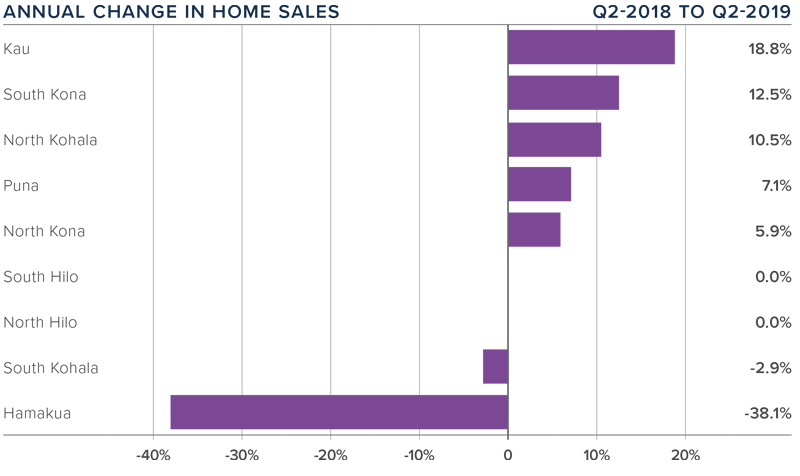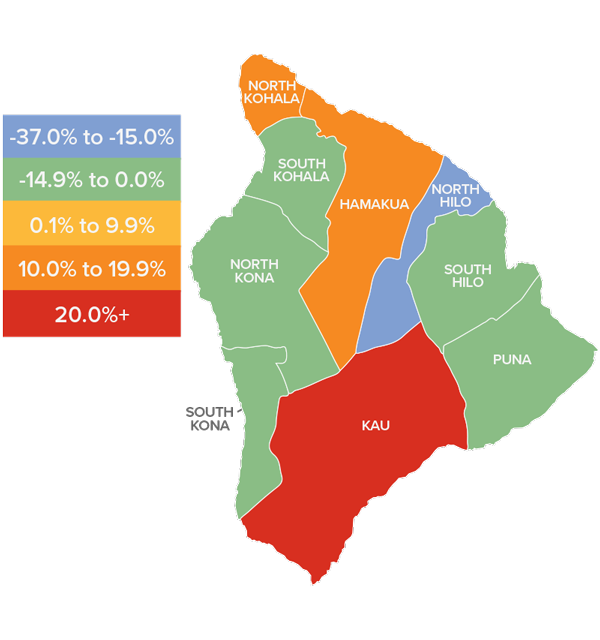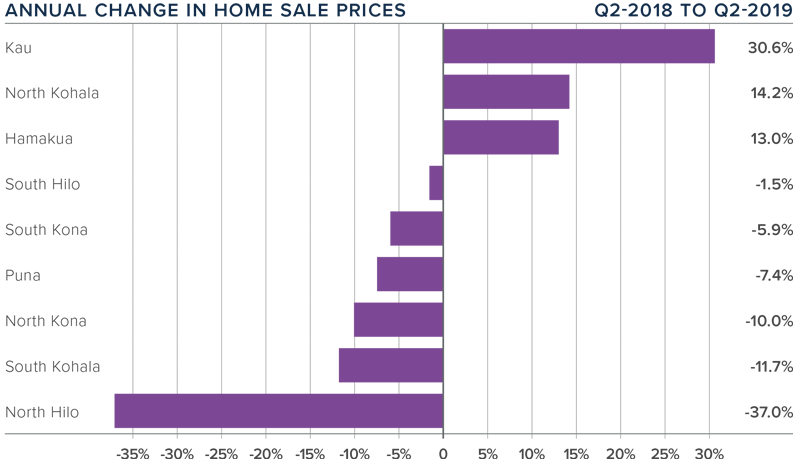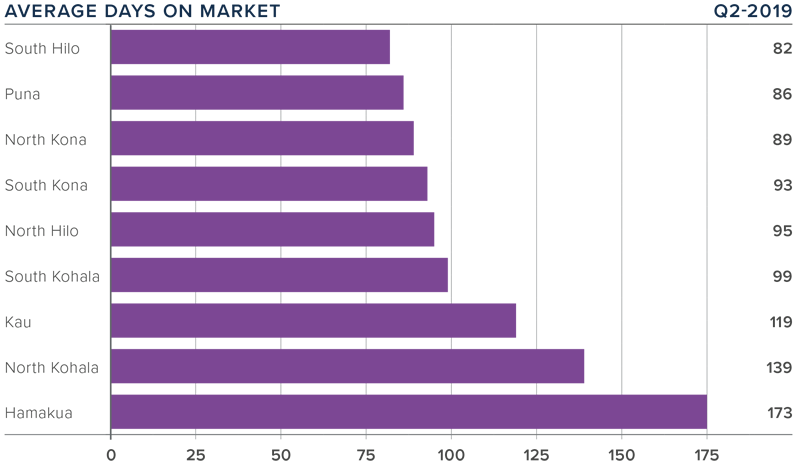
The following analysis of the Big Island real estate market is provided by Windermere Real Estate Chief Economist Matthew Gardner. We hope that this information may assist you with making better-informed real estate decisions. For further information about the housing market in your area, please don’t hesitate to contact your Windermere agent.
ECONOMIC OVERVIEW
The tepid pace of employment growth in Hawaii continues. Only 1,200 jobs were added over the past 12 months, representing an annual growth rate of 0.2%. In June, the state’s unemployment rate was 2.8%—a figure that has remained static for the past four months—but it is up from 2.4% a year ago.
On the Big Island, total employment continues to contract, having lost 4,150 jobs over the past year. Annualized employment growth has been negative for the past nine months. The island’s unemployment rate was 4.1%, up from 3.7% a year ago.
HOME SALES
- In the second quarter of 2019, 913 homes traded hands, an increase of 3.6% over the second quarter of 2018 and 30.8% higher than in the first quarter of 2019.
- Sales were higher in five markets, static in two, and fell in two. There was significant growth in sales in Kau, but it is a very small market. Similarly, the contraction in sales in Hamakua can be attributed to the small size of the area.
- The growth in sales came as inventory levels rose 16.6% from a year ago. However, the average number of homes for sale in the quarter was 4.9% lower than in the first quarter of this year. Listing activity remains lower than I would like to see, but the uptick in homes for sale (relative to a year ago) is encouraging.
- Inventory levels rose in seven of the markets analyzed: Puna, South Hilo, Hamakua, North Kohala, North and South Kona, and Kau. This may give some relief to home buyers.

HOME PRICES
 The average home price in the region dropped 5.7% year-over-year to $525,611. Prices also dropped between the first and second quarters by 2.9%.
The average home price in the region dropped 5.7% year-over-year to $525,611. Prices also dropped between the first and second quarters by 2.9%.- Affordability remains an issue, but current low interest rates may stimulate buyers as we move through the balance of the year.
- Prices rose in three markets but dropped in six. Appreciation was strongest in Kau, where prices rose 30.6% — again, a function of it being a very small area with limited sales.
- Despite ongoing affordability issues in many Big Island market areas, I still expect home prices to rise modestly in 2019.

DAYS ON MARKET
- The average time it took to sell a home on the Big Island rose three days compared to the second quarter of 2018.
- The amount of time it took to sell a home dropped in four market areas and rose in five.
- In the second quarter, it took an average of 108 days to sell a home. Homes sold fastest in South Hilo and slowest in Hamakua.
- The recent drop in mortgage interest rates has the potential to stimulate demand as we move through the balance of 2019.

CONCLUSIONS
 This speedometer reflects the state of the region’s real estate market using housing inventory, price gains, home sales, interest rates, and larger economic factors.
This speedometer reflects the state of the region’s real estate market using housing inventory, price gains, home sales, interest rates, and larger economic factors.
For the second quarter of this year, I have left the needle fairly close to the middle, suggesting that we are approaching a balanced market. I was pleased to see the number of homes for sale increase, and the drop in home prices may suggest that home price growth has hit a peak. With this shift in the market, buyers have more choices and are able to be more selective when choosing a new home.
ABOUT MATTHEW GARDNER
 As Chief Economist for Windermere Real Estate, Matthew Gardner is responsible for analyzing and interpreting economic data and its impact on the real estate market on both a local and national level. Matthew has over 30 years of professional experience both in the U.S. and U.K.
As Chief Economist for Windermere Real Estate, Matthew Gardner is responsible for analyzing and interpreting economic data and its impact on the real estate market on both a local and national level. Matthew has over 30 years of professional experience both in the U.S. and U.K.
In addition to his day-to-day responsibilities, Matthew sits on the Washington State Governors Council of Economic Advisors; chairs the Board of Trustees at the Washington Center for Real Estate Research at the University of Washington; and is an Advisory Board Member at the Runstad Center for Real Estate Studies at the University of Washington where he also lectures in real estate economics.
 Facebook
Facebook
 X
X
 Pinterest
Pinterest
 Copy Link
Copy Link



